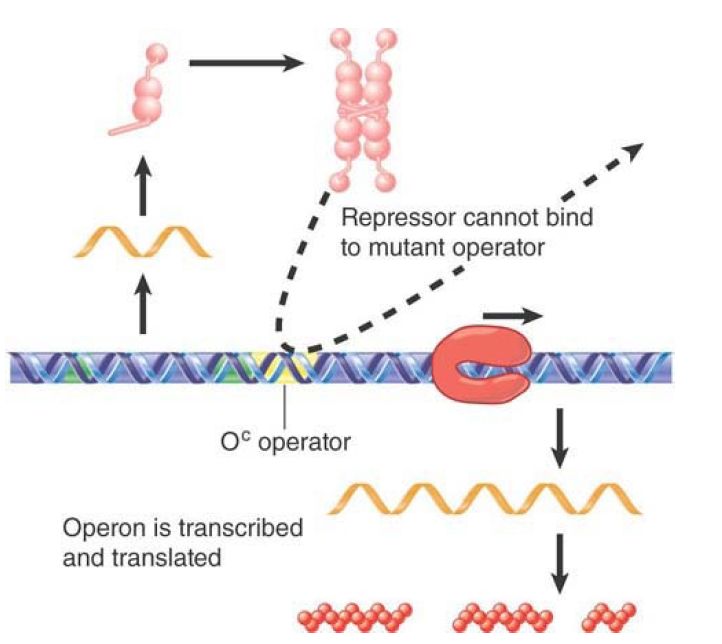


 النبات
النبات
 الحيوان
الحيوان
 الأحياء المجهرية
الأحياء المجهرية
 علم الأمراض
علم الأمراض
 التقانة الإحيائية
التقانة الإحيائية
 التقنية الحيوية المكروبية
التقنية الحيوية المكروبية
 التقنية الحياتية النانوية
التقنية الحياتية النانوية
 علم الأجنة
علم الأجنة
 الأحياء الجزيئي
الأحياء الجزيئي
 علم وظائف الأعضاء
علم وظائف الأعضاء
 الغدد
الغدد
 المضادات الحيوية
المضادات الحيوية|
Read More
Date: 28-5-2021
Date: 13-12-2015
Date: 27-2-2021
|
cis-Acting Constitutive Mutations Identify the Operator
KEY CONCEPTS
- Mutations in the operator cause constitutive expression of all three lac structural genes.
- These mutations are cis-acting and affect only those genes on the contiguous stretch of DNA.
- Mutations in the promoter prevent expression of lacZYA and are uninducible and cis-acting.
Mutations in the regulatory circuit may either abolish expression of the operon or cause constitutive expression. Mutants that cannot be expressed at all are called uninducible. Mutants that are continuously expressed are called constitutive mutants.
Components of the regulatory circuit of the operon can be identified by mutations that (1) affect the expression of all the regulated structural genes and (2) map outside them. They fall into two classes: cis-acting and trans-acting. The promoter and the operator are identified as targets for the regulatory proteins (RNA polymerase and repressor, respectively) by cis-acting mutations. The locus lacI is identified to code for the repressor protein by mutations that eliminate the trans-acting product. The operator was originally identified by constitutive mutations, denoted Oc , whose distinctive properties provided the first evidence of an element that functions without being represented in a diffusible product. The structural genes contiguous with an Oc mutation are expressed constitutively because the mutation changes the operator so that the repressor no longer binds to it. Thus, the repressor cannot prevent RNA polymerase from initiating transcription. The operon is transcribed constitutively, as illustrated
in FIGURE 1.

FIGURE 1.Operator mutations are constitutive because the operator is unable to bind the repressor protein; this allows RNA polymerase to have unrestrained access to the promoter. The Oc mutations are cis-acting, because they affect only the contiguous set of structural genes.
The operator can control only the lac genes that are adjacent to it. If a second lac operon is introduced into the bacterium on an independent molecule of DNA, it has its own operator. Neither operator is influenced by the other. Thus, if one operon has a wildtype operator it will be repressed under the usual conditions, whereas a second operon with an Oc mutation will be expressed in its characteristic fashion.
Promoter mutations are also cis-acting. If they prevent RNA polymerase from binding at P , the structural genes are never transcribed. These mutations are described as being uninducible.
Like Oc mutations, mutations in the promoter only affect contiguous structural genes and cannot be substituted with another promoter that is present on an independent molecule of DNA.
These properties define the operator as a typical cis-acting site, whose function depends upon recognition of its DNA sequence by some trans-acting factor. The operator controls the adjacent genes irrespective of the presence in the cell of other alleles of the site. A mutation in such a site—for example, the Oc mutation—is formally described as cis-dominant.



|
|
|
|
التوتر والسرطان.. علماء يحذرون من "صلة خطيرة"
|
|
|
|
|
|
|
مرآة السيارة: مدى دقة عكسها للصورة الصحيحة
|
|
|
|
|
|
|
نحو شراكة وطنية متكاملة.. الأمين العام للعتبة الحسينية يبحث مع وكيل وزارة الخارجية آفاق التعاون المؤسسي
|
|
|